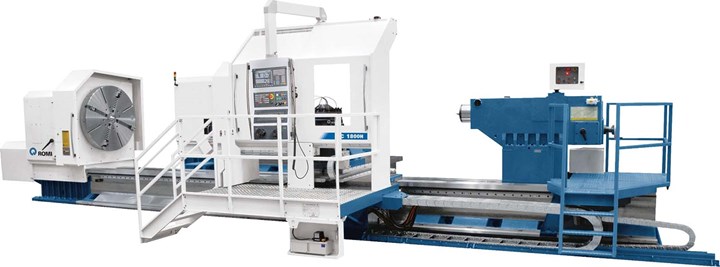Romi's New Heavy-Duty Lathe Manufactures Large Steel Parts
Weighing in at 97,000 lbs, the C 1800H heavy-duty CNC lathe features a distance between centers from 157 to 394 inches, a 47-inch swing over cross slide and a maximum weight capacity between centers of 66,100 lbs at 50 rpm.
Share




Romi says its C 1800H heavy-duty CNC lathe from is ideal for machining large steel parts and components. Weighing in at 97,000 lbs, the lathe features a distance between centers from 157" to 394", a 47" swing over cross slide and a maximum weight capacity between centers of 66,100 lbs at 50 rpm. The bed width and height are 55" and 30", respectively.
Romi's C 1800H is part of the company's C series heavy-duty flatbed CNC lathes. Each model is built with monoblock cast iron beds with hardened and ground guideways for optimum rigidity, accuracy and performance. The C1800H features a 114 hp main motor and a geared A2-20" headstock with Timken precision bearings. According to the company, it has a robust tailstock with thrust force monitoring and compensation system.
All critical components used to build Romi machine tools are designed and built in-house, which the company says leads to complete control and manufacturing quality assurance. Romi says its machine tools are designed and manufactured based on extensive customer research and feedback.
Related Content
-
CNC Machine Shop Honored for Automation, Machine Monitoring
From cobots to machine monitoring, this Top Shop honoree shows that machining technology is about more than the machine tool.
-
4 Tips for Staying Profitable in the Face of Change
After more than 40 years in business, this shop has learned how to adapt to stay profitable.
-
Finding the Right Tools for a Turning Shop
Xcelicut is a startup shop that has grown thanks to the right machines, cutting tools, grants and other resources.























